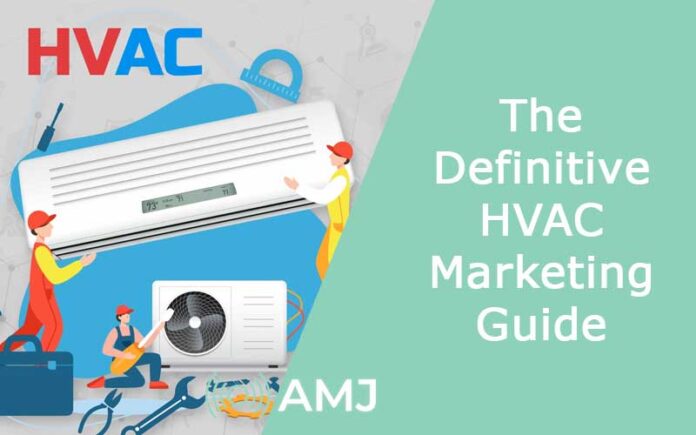
The HVAC field is changing quickly because of new technology and changing customer needs. In 2024, companies need to adapt thriving HVAC marketing campaigns to follow trends if they want to stay in business and boost their grow.
Many things will affect HVAC marketing next year:
- The focus is on online advertising
- Personalized care
- Checks and social proof
- Video ads for sales
- The addition of smart home
- Optimization for mobile
This guide shows HVAC marketers how to use the above platforms and methods to connect with customers, show they are valuable, and make more money in 2024 and beyond. Both digital and traditional strategies need to be integrated and based on data.
Contents
Direct Mail Does Its Job
Direct mail, even in the online marketing age, should be a part of your HVAC marketing. Why? Unlike digital messages, a postcard, flyer, or coupon can stand out.
Postcards
Postcards are easily sent to homes in the area. Front has an exclusive deal, and back has more information. You can use mailers that look like credit cards. Choose homes that are not clients. Regularly update your postcards list to avoid addresses that can’t be delivered.
Flyers
Postcards might not give you as much information as flyers. Give fliers to your friends. People in the office can take flyers. Examples include deals for the holidays.
Coupons
Local home freebies bring in more calls and sales. Free stuff and deals bring in new customers. Timing makes things more urgent. Keep an eye on return rates to find deals that will work. New users can get coupons.
Always look at your message and targeting, and make it better.
For the best results, consider incorporating business postcard mailers along with other marketing methods.
Making a Website
People usually get their first opinion of an HVAC company from its website. The style of a website is what brings in new customers, raises awareness of a brand, and generates leads.
HVAC websites should be fast, work well on mobile devices, and follow SEO best practices.
Supports Mobile Devices
A website that works well on phones is very important since more and more people use smartphones to connect to the internet. It’s necessary for the person to enjoy it. Websites for HVAC should work on any screen. Any screen can easily access the site.
Website Speed
Conversions are affected by how fast Google ranks sites. Slow loading times lead to more bounces and less money coming in. Find delays by using speed tests.
Setting Up SEO
Putting keywords in titles, meta descriptions, headers, and content makes it more visible and helps it rise higher. Sitemaps, structured data, and robots.txt all help SEO. Site data can help you target search terms better. Keyword-friendly websites get qualified visitors 24 hours a day, seven days a week.
Search Engine Optimization
HVAC marketing should focus on SEO. Optimizing your website and online presence is vital as more consumers use Google to find local businesses.
Local SEO
Local SEO is essential for HVAC firms. Your website and listings should rank high for “HVAC contractor [city]” and “air conditioning repair [city]“. Some local SEO tips:
- Optimize your Google My Business listing with keywords. This places you at the top of map pack search results.
- Use Yelp and other local citations to build credibility.
- Headings and text should include your city and state.
- Local newspapers, chambers of commerce, and blogs provide high-quality backlinks.
Technical SEO
Website architecture and pages must be optimized technically. Best practices for technical SEO:
- Check your sitemap XML and robots.txt.
- Make your site mobile-friendly with responsive design.
- Increase page speed with caching plugins. SEO suffers from slow loading.
- Add alt text to all photographs.
- Sort URLs and pages for searching.
- Heading tags arrange content.
Link-building
SEO also requires link building. Links from relevant, high-authority sites increase SEO. HVAC firms may link:
- Guest posting on home improvement and local news blogs. Give informative, original content and link.
- Register in HVAC or contractor directories.
- Building trade partnerships with complementary companies.
- Create and promote helpful materials like an HVAC cost guide or checklist that sites will link to.
- Gaining links from local media influencers on social media.
You can get more qualified web traffic and leads from search engines if you have the right SEO plan for your local service area. There is a link between SEO and digital marketing.
Pay-Per-Click Advertising
To generate leads and website traffic, HVAC companies should use PPC advertising. The main PPC platforms are Google and Bing.
Google Ads
Google advertising allows targeted advertising on Google search results pages and other Display Network sites. Pay only for ad clicks. Google Ads is cheap since you may set daily and maximum bids.
Tips for Google Ads success:
- High-value local HVAC service keywords
- Advertising themed by product or service
- A/B trying varied ad text to increase clicks
- Ad group-specific landing pages
- Lead/sales conversion tracking optimization
- Remarketing, location, time, and device targeting.
Planning and optimization can boost Google Ads ROI for HVAC companies.
Bing Ads
Similar PPC platform, Bing Ads, targets Bing. Consider adding Bing to Google Ads – it has one-third of the US desktop search market share.
Benefits of Bing Ads include:
- Bing Ads Editor has advanced bulk management capabilities and lower HVAC keyword competition than Google.
- Integrating LinkedIn for professional targeting
- Less expensive, better ads than Google
- Combined Google Ads reporting
To optimize Bing Ads:
- Research low-competition local keywords.
- Google Ads import, Bing customization
- Optimize Bing ads.
- Combine campaign and Google Ads reporting.
Bing Ads can enhance PPC and lead creation with the right campaign.
Social Media Marketing
HVAC marketing requires social media platforms like:
- Facebook: HVAC companies need Facebook, the largest social network with 2 billion monthly members.
- Instagram: Instagram has approximately 1 billion monthly photo-sharers. Showcase your HVAC professionals, equipment, before/after projects, and company culture with appealing photographs and videos.
- LinkedIn: Over 700 million members, LinkedIn dominates B2B marketing. You can use blogs, how-tos, infographics, case studies, news, and trends.
- Twitter: Twitter is smaller than other networks, but its 300 million active users make it worth including in social strategies.
Conclusion
To keep up, you need to use new technology and smart, data-driven old methods. For the most impact, online ads, personalized service, social proof, and direct mail should all be used together.
Digital and traditional marketing must work together in a flexible way to create HVAC marketing plans that meet customers’ shifting needs and set businesses up for long-term growth in a market that is always changing.












![Index of Money Heist [Season 1, 2, 3 & 4 – All Episodes, Cast and Plot] Index of Money Heist](https://www.asiamediajournal.com/wp-content/uploads/2021/05/Index-of-Money-Heist-3-100x70.jpg)